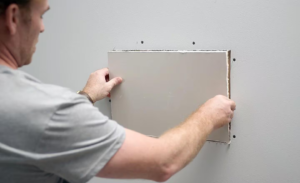Pest control companies have specialized training to understand the types of bugs that are native to your area. They also have access to chemicals and pesticides that are more effective than store-bought products. Contact Killian Pest Control now!
Control methods include:
- Prevention.
- Suppression (reducing pest numbers to an acceptable level).
- Eradication (destroying the pest population).
Look for a company that belongs to professional associations.

Insects are the most numerous and diverse organisms on the planet, representing the biological foundation of terrestrial ecosystems. They decompose and recycle nutrients, disperse seeds, maintain soil structure and fertility, control populations of other species by predatory or parasitic activity, and act as a major food source for vertebrates, including birds, amphibians, reptiles, fish, and mammals. In addition, insects play a vital role as pollinators.
In the garden, many common insects such as slugs and snails, caterpillars, beetles, flies, fruit flies and mosquitoes can cause damage by feeding on live plants or by laying eggs that will result in diseased growth or offspring. They can also damage plants by leaving ragged holes in the leaves and stems, or by stealing water and nutrients from the plant. They are best controlled by using a combination of cultural, mechanical and chemical methods, with an emphasis on reducing insecticide use.
The natural enemies of pests, including predators, parasitoids and pathogens, help limit their densities, making them less damaging than they would be without these important natural controls. Biological control involves finding and testing suitable natural enemies of the targeted pest, then collecting, rearing and inundatively releasing them to establish a population that will be long-term effective in controlling the pest. This process requires thorough research into the biology of the target pest, potential natural enemy species and their life cycles, as well as the impact of any unintended consequences.
Careful use of pesticides can also reduce their impact on natural enemies by minimizing contact between them and the chemicals. In particular, spot applications and the use of less persistent pesticides can minimize contact with natural enemies, especially when they are in vulnerable life stages such as larvae and pupae.
Rodents
Rodents (order Rodentia) are a worldwide problem because of their widespread food and water consumption and their role in spreading disease. They contribute to global malnutrition and poverty by eating crops, destroying grain stores, and spreading zoonotic diseases that affect humans and livestock. The most common pests are rats and mice.
Rodents are natural intruders that invade buildings seeking food, shelter, and water. Signs of a rodent problem include rodent droppings, gnaw marks, chewed insulation, tin foil, and holes in walls, cabinets, or the floor. Rodents are also notorious for chewing through electrical wiring, which can result in exposed wires and leaking pipes that create fire hazards.
A combination of prevention and control methods is often required to solve a rodent infestation. Proper sanitation and cleaning can help reduce the rodent population and prevent it from growing out of control. Regularly removing trash from the building, cleaning up spilled food, and securing garbage cans will reduce the number of rodents that seek out an easy meal in your facility.
Providing clean food and water sources will also reduce the number of rodents in your facility. Keeping the area around your facility clear of debris, tall grass, overgrown vegetation, and other places that provide cover and protection will eliminate a rodent’s ability to hide while hunting for food and water.
Physical/mechanical control is important because rodents have the ability to chew their way through almost anything in order to gnaw and nest. Installing door sweeps, eliminating gaps around utility lines, and sealing cracks will make it more difficult for rodents to get into your facility. It is also a good idea to regularly place nontoxic monitoring bait blocks in tamper-resistant stations in areas where rodents are likely to feed.
Bed Bugs
Bed bugs are a growing problem in homes, apartments and hotels. This is because of their tendency to travel from one room to another in search of a new host. In addition, many people may unknowingly bring them home in clothing, backpacks, luggage and personal belongings from laundromats or other public places. Additionally, neighbors can have bed bug infestations that spread to your home through shared wall voids or plumbing or electrical conduits.
The first step in controlling bed bugs is thorough inspection and assessment by a pest control professional. This enables the pest control technician to locate hiding spots, determine the extent of the bed bug problem, and decide on an appropriate treatment strategy.
Before any treatment, the affected area must be prepared. This usually involves decluttering, washing or heat-treating infested clothing and linens and vacuuming floors and surfaces. A good quality vacuum cleaner can be helpful, although it is important to remember that even a deep vacuum cannot remove all bed bugs and their eggs from the crevices and depressions where they hide during the day.
Adult females lay three to five adhesive eggs daily, with each egg resembling a tiny dust speck. The eggs hatch within a week at room temperature to produce juveniles (nymphs) that are straw-colored and no bigger than a pinhead. Nymphs feed on blood and must molt five times before becoming adults.
While training housekeeping staff to watch for signs of a bed bug infestation is important, the best way to prevent and/or control bed bugs is regular, professional pest control services. Infestations that are small and localized are much easier to treat than those that have become established and widespread.
Wasps
Although they can be a nuisance, wasps are important for pest control. Solitary wasps, like hornets and yellow jackets, feed on pest insects that damage plants. While they have a bad reputation for attacking humans, most wasps are solitary and pose little threat to people other than their painful stings. They are also significant pollinators.
In the garden, wasps hunt in crevices and undersides of leaves where pests hide. They are especially effective at eradicating caterpillars and aphids, which conventional chemical sprays have difficulty reaching.
Wasps are also good for scouting out pests in trees, shrubs, and flowers before they become too large to be effectively managed by birds and other natural predators. This allows horticulturists to use less harmful insecticides.
However, it is important to recognize the difference between solitary wasps and social wasps (also known as vespids). Social wasps build nests in trees and overhangs, rather than in foundations or on the ground, and are often more aggressive than solitary wasps. A professional can help you limit the number of wasps around your home by removing favored nesting locations and keeping food and water sources away from the house.
If you encounter a nest, avoid approaching it or shaking the tree where it is located. This can provoke a dangerous reaction. If you are concerned about being stung, wear a mask and do not attempt to remove the nest yourself. Instead, call a pest control professional to use a dust or powder insecticide formulated for wasps and hornets. Hardware and garden stores carry products such as Permex Insect Dust and Rentokil Wasp Killer, which contain the active ingredient permethrin. Be sure to follow the manufacturer’s safety instructions when using any pesticide.
Ants
Ants are familiar pests that affect homes and gardens. They are found in both urban and rural areas and can be an annoying nuisance for some people. However, they have a significant ecological value. Some even serve as bioindicators of soil quality and pest presence in a field.
While ants may be annoying for homeowners, they are important predators that keep pest populations in check and improve crop yields. According to a recent study, ants significantly decrease the abundance of pest species that damage fruit, seeds and leaves. This is mainly because ants hunt and eat them, and they also assist herding pests to fresher regions in the field.
There are thousands of different ant species, and they often look similar to termites, making it difficult to tell them apart. However, ants have a pinched section between their abdomen and thorax, while termites have straight antennae. In addition, ants have six legs, while termites have two. Ants have one set of jaws that are used to eat, the other for defense. They communicate with each other by sending out pheromones and rubbing their antennae against their bodies to make sound signals.
If ants invade a house, the most common treatment is a spraying around windows and doors using a general insecticide that kills them on contact. However, a preventative strategy will help reduce the risk of an ant infestation in the first place. Clearing clutter, wiping down counters and sweeping floors will eliminate food and water sources that attract them. Also, fixing leaky faucets and securing the outside of the home will limit their access to indoors. Trimming branches and shrubs that touch the house will also minimize entry points.




